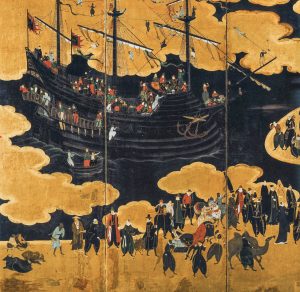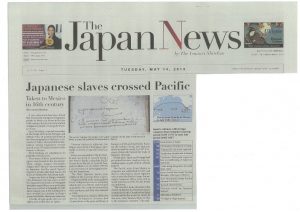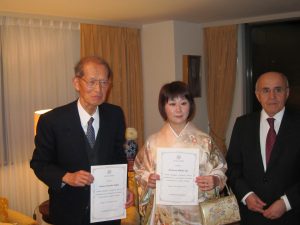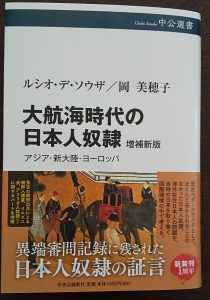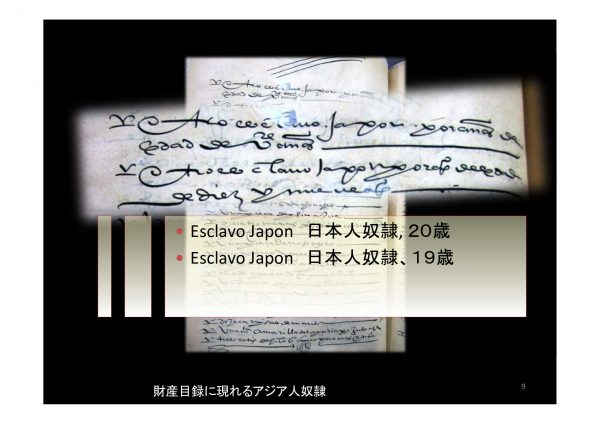
February 22, 2021
大航海時代に海を渡った日本人Japanese Who Crossed Oceans in the Age of Exploration
戦前の日本は大変貧しく、「からゆきさん」などの契約労働者や集団移民が南洋、ブラジル、アメリカなどに渡ったことが知られています。その後豊かになった日本からは、海外に出稼ぎに行く人はほとんどいなくなりました。実はこのような戦前の状況は、16世紀、日本の戦国時代にもありました。漫画やドラマで描かれる日本の戦国時代は、イケメン武将が活躍するイメージだと思いますが、実際には戦乱に巻き込まれた民衆の生活は悲惨のひとことでした。戦場では乱捕りと呼ばれる人間の掠奪、人身売買が当然のように行われていました。その頃、九州に交易にやってくるようになったヨーロッパ人は、非常に安い値段で売られるヒトを「奴隷」として買い、海外へと連れていったのです。奴隷契約とはいっても、日本の感覚で言うと「年季奉公」のつもりであった人も多くいたと思われます。日本から一番遠いところでは、16世紀末、地球の裏側アルゼンチンで自分の解放を言い立てて訴訟を起こした日本人の青年フランシスコの記録が知られています。「奴隷」という制度は先進国では随分前に廃止されましたが、実態としては限りなく「奴隷」に近い存在の労働形態が、世界のあちらこちらに存在することを、私たちは忘れてはならないと思っています。
基本的には南蛮貿易全般を研究しています。グローバル・ヒストリーからのアプローチも視野に入れ、今年は2冊の英語の研究書(単著、編著)を出版予定です。
〈LINKS〉
ルシオ・デ・ソウザ/岡美穂子著『増補新版 大航海時代の日本人奴隷』(中央公論新社、2021年)
「ポルトガル商人に毎年1000人が海外へ売られた!『大航海時代の日本人奴隷』著者が踏み込んだキリシタン史のタブー」日刊サイゾー 2021.2.14
記事と写真:岡美穂子(准教授)
It is known that before the Second World War, when Japan was still a very poor country, many people left the country to work. These included contract workers such as the “karayuki-san”, who went to work in the prostitution industry in Southeast Asian port cities, and emigrants who left en masse for agricultural labor in Brazil, the United States, and other countries. Now that Japan has become rich, few people go abroad to work any longer. In fact, this prewar situation was also present in sixteenth century Japan, during the Warring States period. I think that the Japanese Warring States period depicted in manga and TV dramas offers an image dominated by the heroic acts of handsome war lords, but in reality, the lives of the common people involved in the wars were tragic. On the battlefield, human capture and trafficking were taken for granted as part of the common practice of “randori” (raiding). Around that time, Europeans (mainly Portuguese) who came to Kyushu for trade bought humans, who were sold at very low prices, as “slaves” and took them abroad.
From historical records, we know of a case where a young Japanese man called Francisco appealed to a court in Argentina (on the opposite side of the globe from Japan) at the end of the sixteenth century seeking liberation from his unjustified enslavement.
The system of “slavery” was abolished long ago in developed countries, but we should not forget that there are labor forms that are “slavery-like” in many parts of the modern world even now.
I am studying the Namban trade from the perspectives of global history and regional history (which is not to be equated with national history). This year (2021) two English academic books (one monograph and another as editor) will be published.
〈LINKS〉
ルシオ・デ・ソウザ/岡美穂子著『増補新版 大航海時代の日本人奴隷』(中央公論新社、2021年)
「ポルトガル商人に毎年1000人が海外へ売られた!『大航海時代の日本人奴隷』著者が踏み込んだキリシタン史のタブー」日刊サイゾー 2021.2.14
Text and photos: Mihoko Oka (Associate Professor)
Proofreading: David Buist (Project senior specialist)
主担当教員Associated Faculty Members
准教授
岡 美穂子
- 文化・人間情報学コース
Associate Professor
OKA, Mihoko
- Cultural and human information studies course


